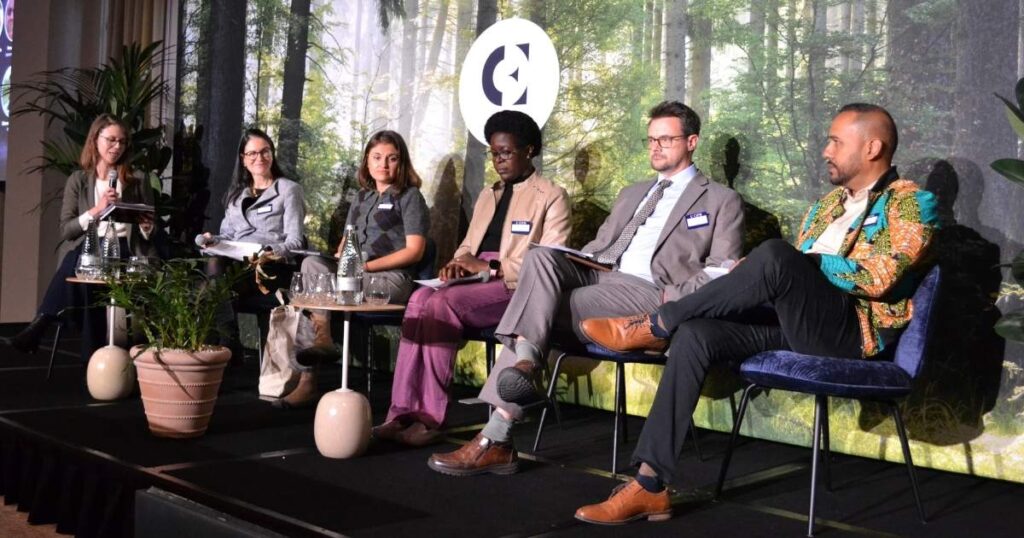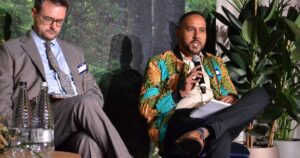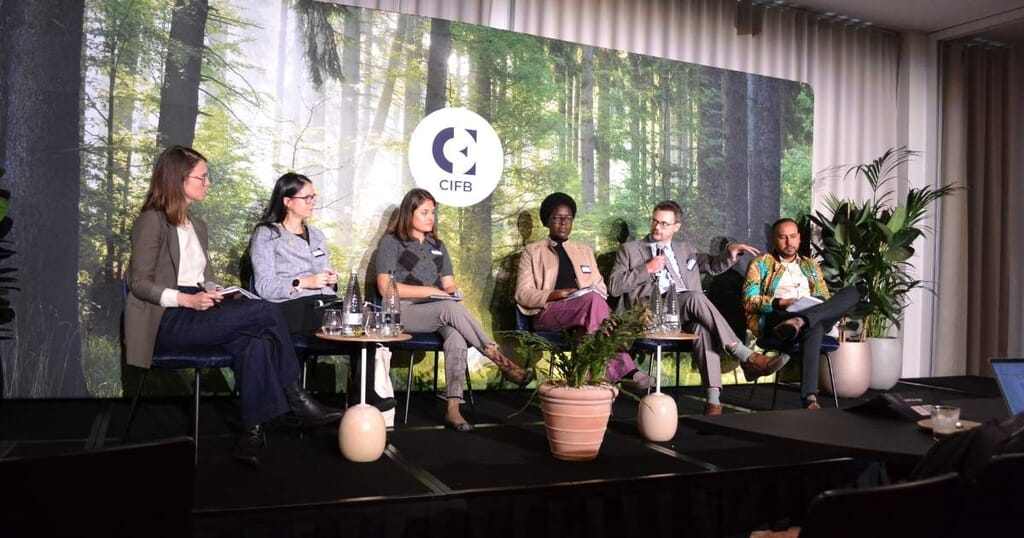At #CIFB2025 in London, I had the privilege of joining a thought-provoking panel to explore a central question in our field:
How do we move from consultation to true co-creation with communities as we scale carbon projects in the Global South?

It was an honor to share the stage with Dianah Nalwanga -Wabwire Nalwanga-Wabwire (Plan Vivo & Ecotrust Uganda), Linda Rivera Macedo (Calyx Global), Paul Harrison, MBA, FRGS (Nature Investment), and Jenny Henman (Plant Your Future), in a session expertly facilitated by Valerie Morgan (Climate Impact Partners | B Corp™).
For me, this discussion was personal. At BCP (BioCarbon Partners), co-creation is not a new idea. It is a path we have walked for more than a decade, hand in hand with the communities we partner with across Zambia.
Building on Existing Systems
Our approach has always been to build on what already exists rather than to replace it. We recognize the strength and importance of both traditional and statutory governance systems. Tools such as Project Oversight Committees have been key to fostering transparency, accountability, and genuine participation by bringing together community boards, traditional leaders, government, and developers in one decision-making space.
Through this collaborative model, BCP has come to be recognized as a cooperating partner in Zambia, contributing to policy development, sharing lesson,s and helping shape a model for shared governance.
One of the most significant milestones on this journey has been through the Luangwa Community Forests Project, where communities achieved formal recognition of carbon rights over customary land. This achievement marked a critical step toward genuine community ownership of climate solutions.
Balancing Integrity, Finance, and Impact
The global landscape for carbon projects is evolving quickly. While markets rightly demand integrity and conservative baselines, many projects now face financial strain without mechanisms to absorb unforeseen reductions in carbon performance.

To ensure long-term viability, blended finance and a cost plus approach are becoming essential. These models acknowledge that delivering both impact and integrity comes at a real and ongoing cost, one that must be factored into the future of conservation finance.
At the same time, jurisdictional models are emerging with great potential. Their long-term success, however, will depend on demonstrating sustained impact, building local capacity and addressing the real costs of implementation and monitoring beyond the initial funding phase.
The Path Forward
In my view, REDD+ remains the most effective and scalable mechanism for conservation, provided it is rooted in co-creation. Real sustainability begins when communities move from being project participants to project co-proponents.
Co-creation builds trust. It strengthens legitimacy. And most importantly, it ensures that climate solutions are not only effective but enduring.
Related Articles
